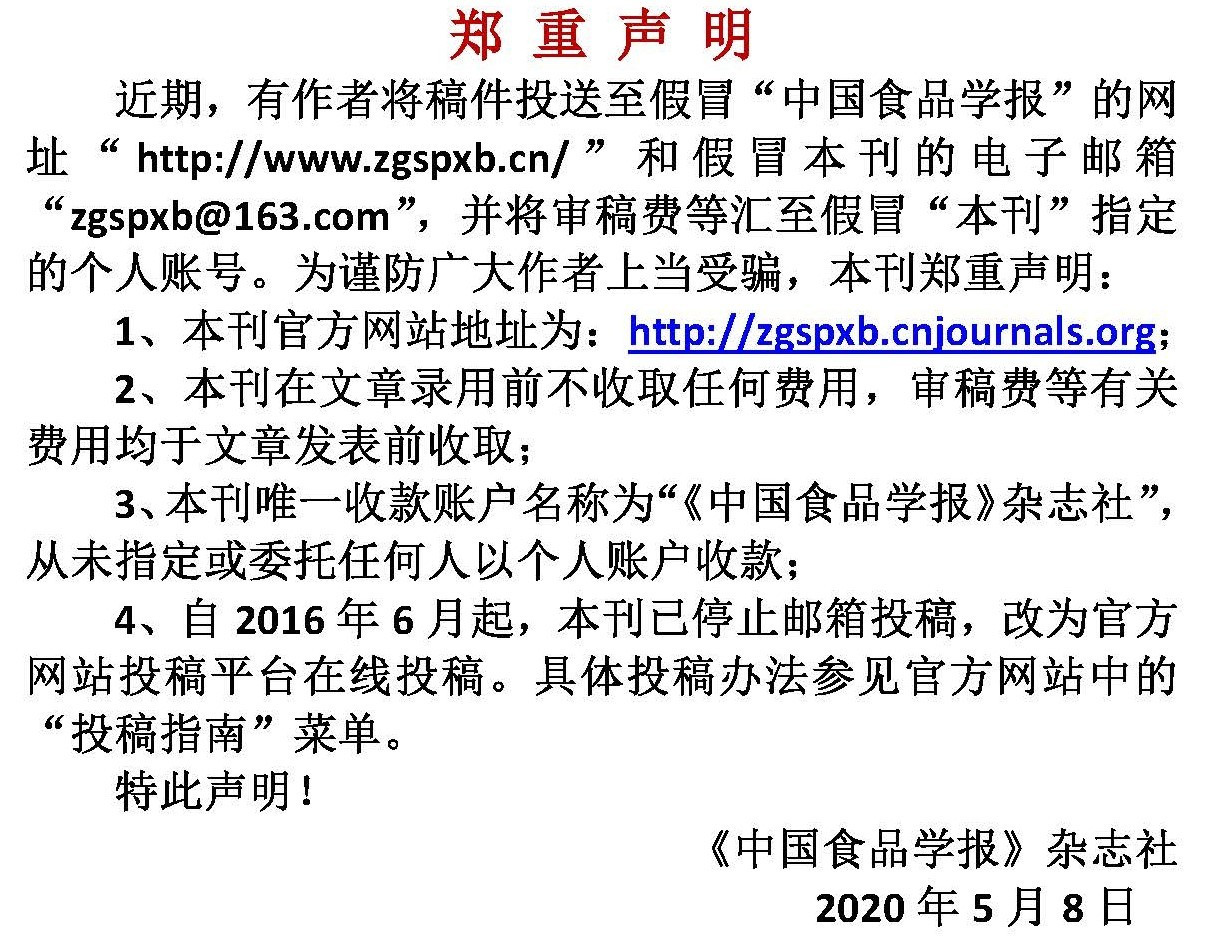基于铜金属有机框架定向提取大米抗氧化肽及其活性研究
作者:
作者单位:
(长沙理工大学食品与生物工程学院 长沙 410114)
作者简介:
通讯作者:
中图分类号:
基金项目:
国家重点研发计划项目(2024YFF1105500);湖南省青年科技人才项目(2022RC1146);湖南省自然科学优秀青年基金项目(2022JJ20039)
Extraction of Antioxidant Peptides from Rice Protein Hydrolysate by a Copper Metal-organic Framework and Activities Study
Author:
Affiliation:
(Changsha University of Science and Technology, School of Food and Bioengineering, Changsha 410114)
Fund Project:
引用本文
陶会真,程静,高正杰,王旭峰,文李,程云辉,陈茂龙.基于铜金属有机框架定向提取大米抗氧化肽及其活性研究[J].中国食品学报,2025,25(3):249-264
复制相关视频
分享
文章指标
- 点击次数:
- 下载次数:
- HTML阅读次数:
历史
- 收稿日期:2024-03-16
- 最后修改日期:
- 录用日期:
- 在线发布日期: 2025-05-23
- 出版日期:
文章二维码

版权所有 :《中国食品学报》杂志社 京ICP备09084417号-4
地址 :北京市海淀区阜成路北三街8号9层 邮政编码 :100048
电话 :010-65223596 65265375 电子邮箱 :chinaspxb@vip.163.com
技术支持:北京勤云科技发展有限公司
地址 :北京市海淀区阜成路北三街8号9层 邮政编码 :100048
电话 :010-65223596 65265375 电子邮箱 :chinaspxb@vip.163.com
技术支持:北京勤云科技发展有限公司
